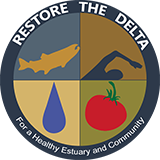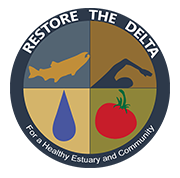Twenty years ago last month, President George H. W. Bush signed the Central Valley Project Improvement Act (CVPIA). The Act included reforms intended to encourage efficient water use, including authorizing transfers of agricultural water and creating a land retirement program to reduce water use on tainted land. It shortened the term of Central Valley Project (CVP) contracts from 40 to 25 years and required a reduction in agricultural water subsidies.
CVPIA also established environmental protection and restoration as a CVP purpose. Among other reforms, it directed the Bureau of Reclamation to double the naturally producing population of anadromous fish – those that migrate from the sea to breed in fresh water – compared to average populations from 1967-1991. The goal of salmon doubling was supposed to be met by 2002.
The CVPIA’s Anadromous Fish Restoration Program was supposed to dedicate 800,000 acre-feet of CVP water every year to environmental protection. The Act created a fund for restoration projects and directed the Department of the Interior to develop a plan to restore the San Joaquin River and its salmon run.
As Barry Nelson of the Natural Resources Defense Council (NRDC) points out in a recent blog, runs have improved on a few small streams such as Clear, Butte, and Battle creeks as a result of this restoration fund. But “On nearly all of the major rivers of the Central Valley – the Sacramento, the San Joaquin, the Stanislaus, the Tuolumne, the Merced and the Cosumnes – salmon numbers have declined, not doubled, over the past two decades.”
In our last newsletter, we reported on a newly-released study by the U.S. Geological Survey, which found that water exports have degraded conditions for fish in both the Delta and San Francisco Bay. Nelson cites a 2008 independent review of the CVPIA’s restoration program that includes the same findings. (That review is titled Listen to the River.) According to Nelson, “In remarkably direct language for a review of this type, scientists concluded that meeting CVPIA and ESA obligations will require ‘a significant reduction in the amount of water pumped out of the system.'” But Nelson notes that federal agencies have mostly ignored the recommendations in the review.
Below is a graph of the salmon doubling index, released last week by NRDC and the Golden Gate Salmon Association. The closest we ever got to meeting the salmon doubling goal was in 2002, when the index peaked at 64.33% of doubling. It’s been mostly downhill from there. Last year, we were at about 13% of the salmon doubling goal.

Meanwhile, export contractors try to scare us all with the specter of higher food costs when they get less than their expected amount of water from the Delta.

Photo Deanna Lynn Wulff
They don’t mention that contracts for water delivery are meaningless when those contracts promise water that our over-subscribed system doesn’t reliably produce, and promise it to users with last-in-line water rights.
How many fish species – species we don’t eat and species we do – are they willing to drive to extinction in order to keep food costs artificially low or almond exports high?

